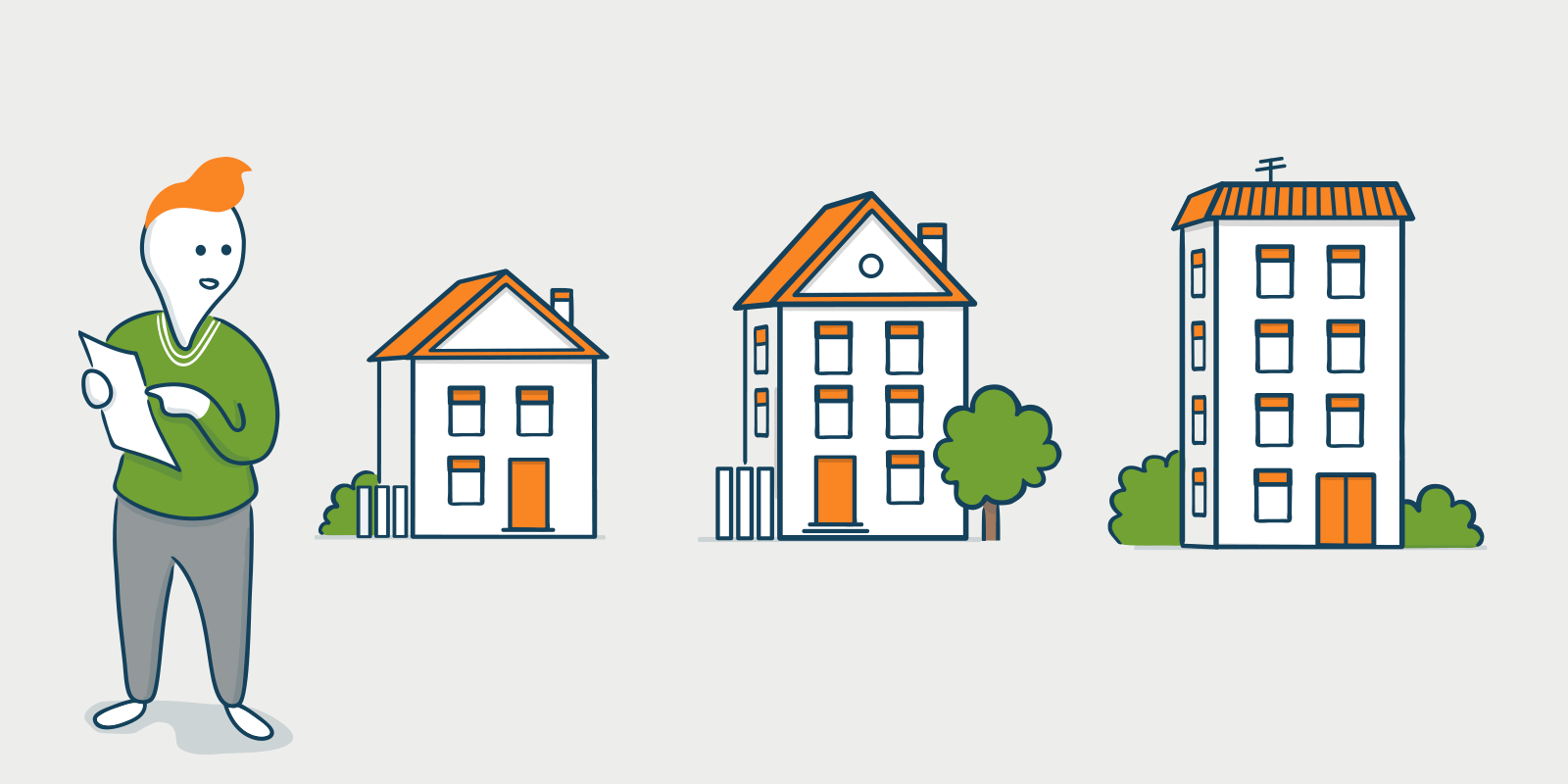
If you want to build a rental portfolio, this all starts with making good property deals. So do you know how to get the best property deal, or are you winging it and hoping for the best?
Well, there are rules that you can follow to make sure you get the very best deal in the first place. Read on to find out more.
Make money the day you buy the property
There’s always the case of being in the right place at the right time. Getting the right price often involves what is known as finding a motivated seller. This is a nice term for someone who finds themselves in a situation where they need to sell quickly. Now, sure this is an opportunity to gain from another person’s misfortune. But, finding a win-win would be a more ethical approach here. After all, the circumstances that a person finds themselves in needing to sell a property fast are never good. It might be debt, divorce, death, so tread carefully.
You can find motivated sellers trying to sell on the usual giant platforms such as Zoopla and Rightmove. By knowing market values, you should be able to spot below the market (BMV) properties. On many of these sites, you can also see what is happening with the property and how fast it is being discounted. You can check out more tips for finding motivated sellers on these platforms here.
You can also buy a bargain property at property auctions. Once again, this will take some research, and with these properties, you need to carefully consider what makes the property a bargain. And when the bidding gets too high, you need to set a limit and know when to drop out.
Adding value later on
If you can spot a property where you can quickly add value to it, then you stand to make either a fast buck or a solid investment. But what can add value to a property? When choosing a property to add value to, these are seven key ways:
The first three ways involve increasing the size of the property:
- The suitability and ability to add an extension at the side, or back of the property
- The possibility of digging down and making full use of the cellar area
- The possibility of creating a new living space into the loft or attic space
The last four ways include general improvement or change of use:
- Improving the appearance and condition, typically a newly updated bathroom or kitchen
- If you can change the use of the property from maybe a large family home to smaller units for single renters
- Change of use and conversion into a business premises
- Planning uplift
The key to adding value is to do just that. No one wants rundown plumbing and old bathrooms in a property. Updating the bathroom is a great way to add value. You might add £30,000 instantly to the property’s price by adding good value fittings and add £35,000 by adding high-end finishings. But if you went crazy, adding unnecessary high-end furnishings to a small house to the tune of £40,000, you just lost £5,000. If you played it safe with acceptable and suitable quality furnishings that cost you £20,000, then you just made yourself a £10,000 profit. Well done. The key here is to spend your money wisely and assess your future buyer’s needs and the market.
Assessing rental demand
Many investors are looking for that perfect little property that has been lacking some love over the last few decades. It’s easy to “flip” property and make those straightforward improvements, including electrics, plumbing, paintwork, walls, kitchens and bathrooms.
Great, you have added value, and the property is ready to sell again. Since these types of investors have no intention of renting, they eliminate assessing the rental demand.
However, suppose you don’t look into whether the property is an excellent rental investment. There might be little rental demand or the rental price is too low to invest. So, when you have done all your renovations, the only potential buyers you will have are homeowners ready to move in. You won’t be able to sell to a potential investor. So whatever your plans for the property, it’s always good to check out the rental demand.
If you scout around letting agents and pose as a potential tenant looking for a similar property in the same geographical place, you will get the best idea for the rental value and any demand and supply.
Pros of unfurnished
Cheaper and quicker
If you are looking for a fast and cheaper turnaround for renting out your property, your rental home will look spacious and attractive without furniture. If you choose to furnish the property, you are also going to have a higher insurance bill to cover the contents and the buildings.
Attracts Longer Staying Tenants
Tenants that move into an unfurnished property often stay longer, so it’s worth considering this before you go to great lengths to furnish the property. You need to consider who you are renting to before you go ahead and furnish the property.
Less red tape
Without furnishings, there’s no need to go to tap out inventories and go to the effort of having appliances tested.
Less tax
If the property is unoccupied for any length of time, then an unfurnished property is eligible for a 100% council tax discount. In contrast, if you have furnished it, you will still be liable to pay for half the council tax.
Cons of unfurnished
Lower rent
The primary consideration for leaving the property unfurnished is that you will never achieve the top rental value you could. You might spend maybe £100,000 to achieve a monthly rental of £500. Yet by spending just a few thousand more on furnishing, you could easily add another £100 to this rental figure, which is why many landlords choose to furnish the property.
Pros of fully furnished
Attractive to all sectors
If you have picked yourself up an inexpensive property in the city where students tend to live, this will very much dictate the sector to whom you are renting. Students and young professionals have rarely had the time and money to start accruing furniture, so you will need to fully furnish the property if you will stand a good chance of renting it out to this sector.
However, for many landlords, they can well do without these kinds of tenants, so it just depends on what your market is.
Higher rents
It stands to reason that if you are furnishing a property, you can achieve a higher rental. You are, after all, then hiring out your furniture and appliances as well as your property. You can choose to furnish it basically with a frugal shop at IKEA. Or if you have a large property in a nice area of town, you may want to furnish the property well to achieve the highest rent possible.
Air BnB
If your property is furnished to boutique hotel standards, then you could consider renting on Air BnB. While this can be somewhat stressful as you are looking at only short periods of renting, you will achieve an extremely high rental price per night or week. This means you can probably achieve as much rent in one week as you would in one month.
Therefore, your property is going to suffer far less wear and tear. It does, of course, take a lot more work as each time you have a new occupant, you will need to clean the property immaculately and provide fresh linen. However, if you hate the idea of your property being damaged by long-term tenants, then this could be the option for you.
Cash flow and return on investment
If you are building a property empire, then you need to make sure that you have a positive cash flow each month from each property. As any landlord knows, there are several expenses involved in renting aside from the mortgage interest. As a rule of thumb make sure you have covered things such as wear and tear, repairs and taxes. You need to make certain the rental income is at least 125% of the monthly mortgage interest. If you pay taxes at a higher rate, these costs must be calculated at this stage. For example, if you had a property with a mortgage interest of £500, the rental payment must be at least £625. If it were rented for £725, we would estimate that this has a cash flow of around £100 per month.
This is only a rough assessment that you can use as a guide. If it seems like it has a positive cash flow, you can then do your own individual figures for a more accurate analysis.
In addition to sums on the positive cash flow, you also need to work out your ROI. This stands for the return on your investment. This is imperative to calculate which is the best investment you can make. You might work out you can make a quick £30,000 on a rundown property you can pick up for £150,000. That’s great. You’ll make a 20% return on your investment. But if you can make £20,000 on a dilapidated £75,000, the ROI here is almost 27% and represents more bang for your buck.
You also need to do these sums with typical rents you can command to see which properties will bring you the greatest ROI over time if that’s your goal.
Things to remember
These four tips will stand you in good stead to bag yourself a bargain whether you are looking to sell the property straight away or find yourself a solid rental investment.
- Make money the day you buy the property by finding motivated sellers that are happy to sell to you below the market value for a fast turnaround
- Adding value, later on, is a great way to make a property deal a profitable one. If you pick a dilapidated property, you could make some money fast by doing the basics and replacing old plumbing and electrics and modernising wisely on a budget
- Assessing rental demand is an essential element of getting a great deal. You might even get a deal from a struggling landlord and have tenants already installed in the property. But you always need to make sure that those tenants could be replaced if need be. So don’t overlook this step
- It’s only a great deal if you have checked your cash flow and ROI. How much will you make on the deal if you sell and if you rent? Follow the basic sums above to make sure the figures check out



 Protect the environment. Reduce paper consumption and help save the trees as well as save money at the same time.
Protect the environment. Reduce paper consumption and help save the trees as well as save money at the same time. 
